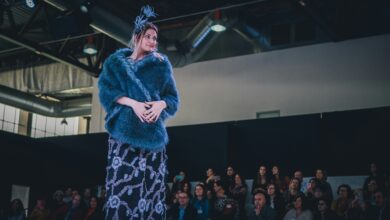The Art of Uniform Design: Blending Style, Functionality, and Branding

Uniforms play a crucial role in establishing a professional image and fostering team spirit. They transcend simple clothing to become a vital aspect of corporate identity. Uniform Design combines creativity and practicality, ensuring that the garments serve their purpose while representing a brand effectively. The process involves understanding the needs of the organization, current trends in corporate fashion, and advancements in the textile industry trends.
This blog delves into the multifaceted world of uniform design, exploring how it evolves with the times and meets the needs of various sectors.
Understanding Uniform Design
Uniform Design begins with a deep understanding of the organization’s ethos and requirements. It involves designing clothing that aligns with the company’s brand identity while maintaining functionality. For example, uniforms for healthcare professionals prioritize comfort and hygiene, while those for hospitality staff emphasize elegance and durability.
The design process also includes selecting colors, patterns, and materials that reflect the organization’s values. For instance, eco-conscious companies often prefer sustainable fabrics to align with their environmental commitment. Uniform Design is not just about aesthetics; it’s about creating a visual language that communicates professionalism and unity.
The Role of Corporate Fashion in Uniform Design
Corporate fashion plays a pivotal role in shaping uniform design. Modern businesses view uniforms as an extension of their brand, ensuring that employees look stylish while maintaining professionalism. This approach has given rise to the concept of power dressing, where uniforms are tailored to boost confidence and create a strong impression.
Gone are the days of monotonous, uninspired uniforms. Today, corporate fashion trends incorporate elements like tailored fits, unique patterns, and seasonal variations. For instance, introducing summer and winter collections ensures that employees remain comfortable and stylish throughout the year. These innovations in corporate fashion reflect the growing importance of employee satisfaction and brand representation.
Trends in the Textile Industry Impacting Uniforms
The textile industry trends significantly influence uniform design, bringing advancements in materials and manufacturing techniques. Innovations such as moisture-wicking fabrics, wrinkle-free materials, and antimicrobial textiles enhance the functionality of uniforms. These features are especially valuable in industries like healthcare, sports, and hospitality, where comfort and hygiene are paramount.
Sustainability is another major trend shaping the textile industry. Brands are increasingly adopting eco-friendly practices, using organic cotton, recycled polyester, and biodegradable dyes in their uniforms. This not only reduces the environmental impact but also appeals to environmentally conscious consumers and employees.
Additionally, smart textiles, embedded with technology such as temperature regulation or UV protection, are making their way into uniforms. These advancements reflect the textile industry trends that prioritize innovation and practicality in uniform design.
Making Uniforms Unique
One of the most exciting aspects of uniform design is customization. Companies now seek to create unique uniforms that reflect their identity. From incorporating logos and slogans to using brand-specific color schemes, customization ensures that uniforms stand out.
For example, tech startups often opt for casual, comfortable uniforms like branded hoodies and polo shirts to reflect their modern, relaxed culture. In contrast, luxury brands prefer elegant, high-end designs to emphasize sophistication and exclusivity. This blend of corporate fashion and tailored uniform design ensures that every detail resonates with the company’s image.
Enhancing Employee Experience Through Uniforms
Uniforms have a direct impact on employee satisfaction and productivity. Well-designed uniforms provide comfort, instill pride, and foster a sense of belonging. Companies that invest in high-quality materials and thoughtful designs often see a positive effect on employee morale.
The integration of corporate fashion into uniforms allows employees to feel stylish and confident at work. Additionally, the adoption of sustainable materials, as highlighted by textile industry trends, demonstrates a company’s commitment to employee well-being and environmental responsibility.
The Future of Uniform Design
As the business world evolves, so does uniform design. The future will see even greater emphasis on sustainability, innovation, and personalization. Smart uniforms equipped with features like health monitoring or communication devices are likely to become the norm in industries such as healthcare and manufacturing.
Meanwhile, corporate fashion will continue to blur the lines between formal and casual attire, creating versatile designs that cater to diverse work environments. The textile industry trends will drive these changes, introducing advanced materials and eco-friendly practices that redefine uniform design for the better.
Conclusion
Uniform Design is an ever-evolving field that blends creativity with functionality. By incorporating elements of corporate fashion and staying attuned to textile industry trends, companies can create uniforms that are not only practical but also visually appealing and aligned with their brand identity.
As organizations continue to prioritize sustainability and innovation, the future of uniform design promises exciting developments that will enhance both employee experience and corporate image. In a world where first impressions matter, a thoughtfully designed uniform can make all the difference.




